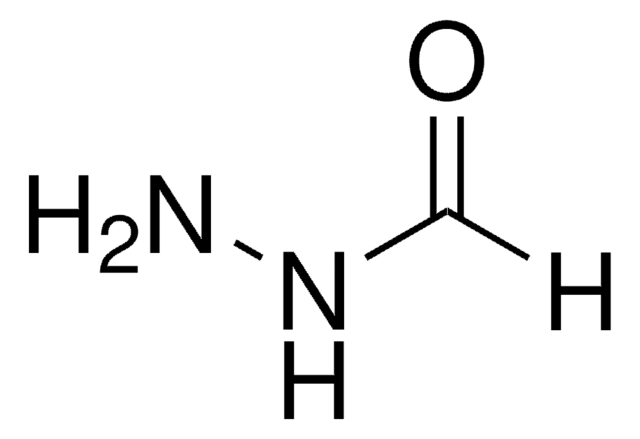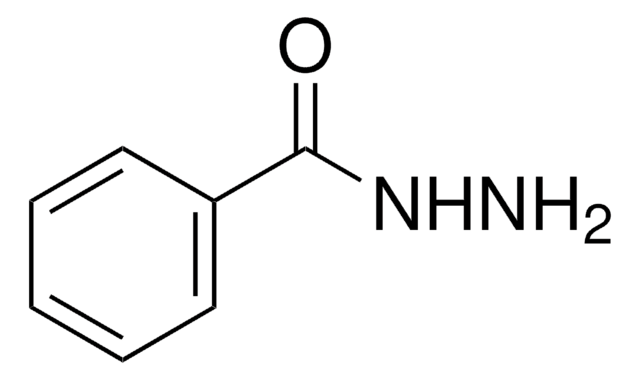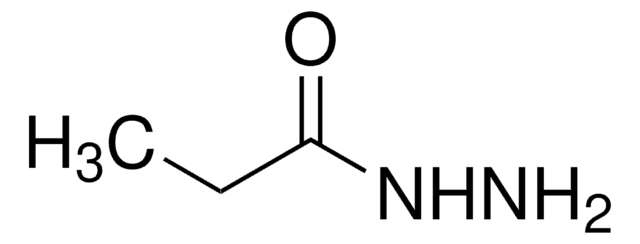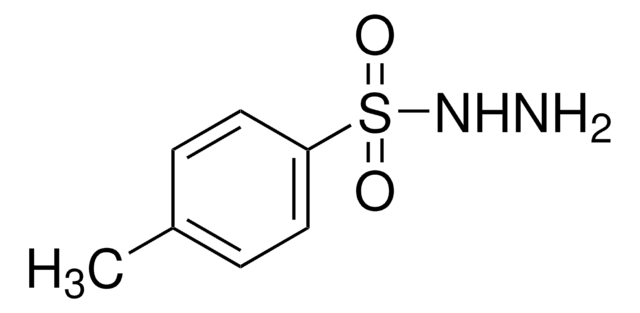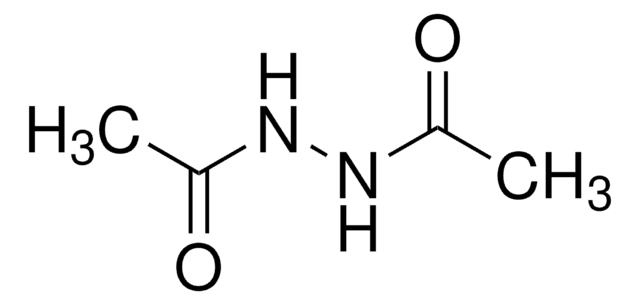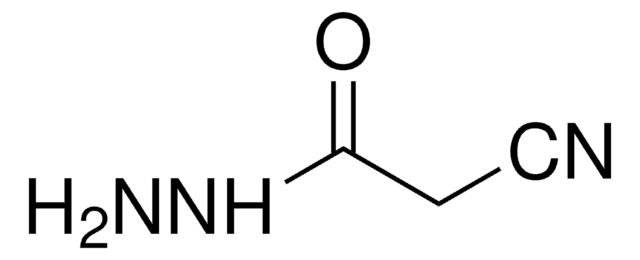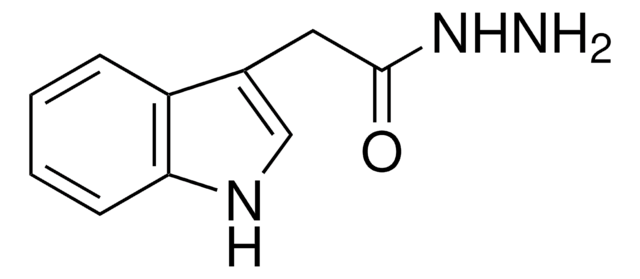A8309
Acethydrazide
90%
Sinonimo/i:
Acetic acid hydrazide, Acetylhydrazine
About This Item
Prodotti consigliati
Livello qualitativo
Saggio
90%
Forma fisica
flakes
Impurezze
<10% acetic acid
P. eboll.
129 °C/18 mmHg (lit.)
Punto di fusione
58-68 °C (lit.)
Stringa SMILE
CC(=O)NN
InChI
1S/C2H6N2O/c1-2(5)4-3/h3H2,1H3,(H,4,5)
OFLXLNCGODUUOT-UHFFFAOYSA-N
Cerchi prodotti simili? Visita Guida al confronto tra prodotti
Categorie correlate
Descrizione generale
Applicazioni
Avvertenze
Danger
Indicazioni di pericolo
Consigli di prudenza
Classi di pericolo
Acute Tox. 3 Oral - Carc. 2 - Eye Irrit. 2 - Muta. 2 - Skin Irrit. 2
Codice della classe di stoccaggio
6.1C - Combustible acute toxic Cat.3 / toxic compounds or compounds which causing chronic effects
Classe di pericolosità dell'acqua (WGK)
WGK 1
Punto d’infiammabilità (°F)
235.4 °F - closed cup
Punto d’infiammabilità (°C)
113 °C - closed cup
Dispositivi di protezione individuale
dust mask type N95 (US), Eyeshields, Faceshields, Gloves
Scegli una delle versioni più recenti:
Possiedi già questo prodotto?
I documenti relativi ai prodotti acquistati recentemente sono disponibili nell’Archivio dei documenti.
I clienti hanno visto anche
Il team dei nostri ricercatori vanta grande esperienza in tutte le aree della ricerca quali Life Science, scienza dei materiali, sintesi chimica, cromatografia, discipline analitiche, ecc..
Contatta l'Assistenza Tecnica.